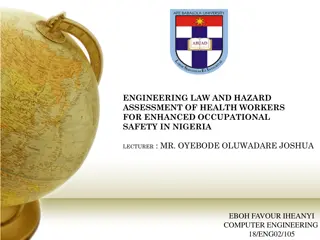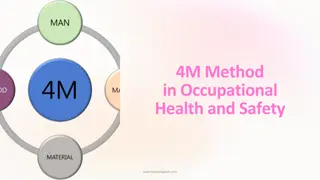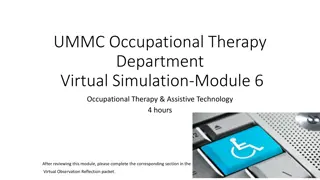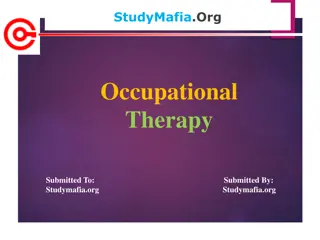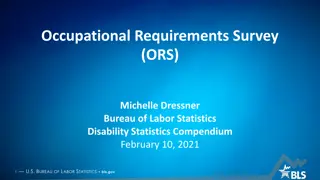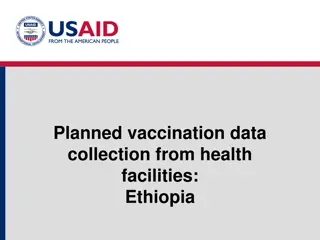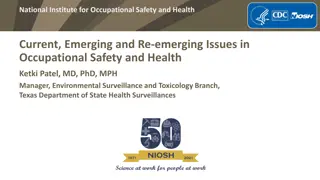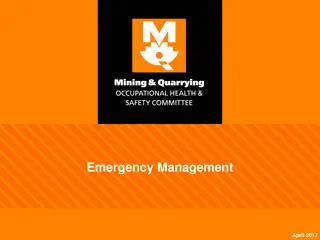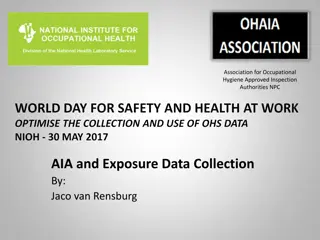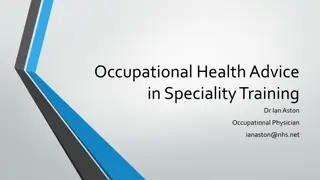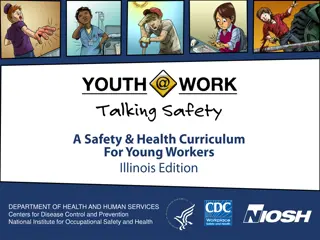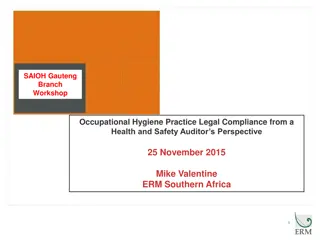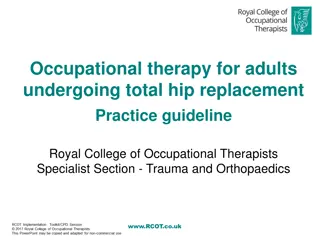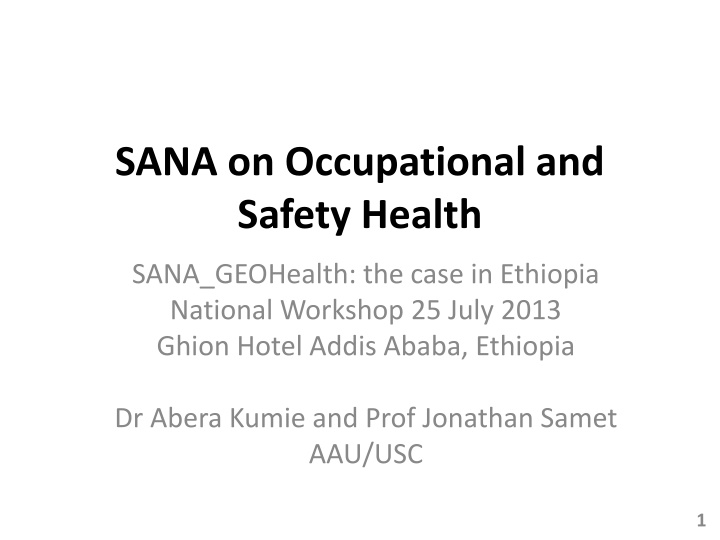
Occupational Safety and Health in Ethiopia: A Comprehensive Review
This content delves into a comprehensive review of occupational safety and health practices in Ethiopia, touching on topics such as workplace hazards, health effects, work environment factors, and more. Through situational analysis and needs assessment, the focus is on key aspects of occupational health services and workplace safety provisions in various sectors like agriculture and manufacturing. The discussion includes exposures to hazards, health effects such as injuries and respiratory disorders, and determinants impacting work environments.
Download Presentation

Please find below an Image/Link to download the presentation.
The content on the website is provided AS IS for your information and personal use only. It may not be sold, licensed, or shared on other websites without obtaining consent from the author. If you encounter any issues during the download, it is possible that the publisher has removed the file from their server.
You are allowed to download the files provided on this website for personal or commercial use, subject to the condition that they are used lawfully. All files are the property of their respective owners.
The content on the website is provided AS IS for your information and personal use only. It may not be sold, licensed, or shared on other websites without obtaining consent from the author.
E N D
Presentation Transcript
SANA on Occupational and Safety Health SANA_GEOHealth: the case in Ethiopia National Workshop 25 July 2013 Ghion Hotel Addis Ababa, Ethiopia Dr Abera Kumie and Prof Jonathan Samet AAU/USC 1
Methods Situational Analysis By large literature review (published) Gray literature: Reports review (gov t, unpublished) Needs Assessment Situational analysis synthesis outcome Face to face discussion with experts, authorities MOLSA, BOLSA, Visits of enterprises 2
SANA_OSH organized 5. Organization of occupational health services 6. Existing practice of work place safety provisions 7. Existing practice of workplace hazard prevention 8. Occupational safety and health information management Contents of OSH_SANA 1. Characterizing work place 2. Characterizing the health effect in occupational settings 3. Work place exposures 4. Work place exposures and determinants in Health facilities 3
1. Type of Work Place and work force: likely under Labour 377/2003 Categories: Agriculture Large and medium scale manufacturing Small Scale enterprise Informal sector Work Force Micro-enterprize- 1,720000 Small scale 138,951 Large and medium scale 175,894 Total 2,100000 [31.4 mln and more total work force: 89% in Agri] 4
2. Work place exposure Hazards Cotton dust, heat, noise Work places Textile factories (Blowing, Carding Cement dust Noise, dust, heat, electric Unguarded machines, poor illumination, heat, slippery floor, oil mist, ergonomics Pesticides KAP (behavior) Vs Haz signs Cement factories Small scale Edible oil State farm, floriculture Metal factory, migrant workers 5
3. Health Effects Health Effect Injury (65 to 335/1000) Work places Textile, large scale, small and medium scale, metal factory, state farm Textile factory (spinning, weaving) Textile factory Hearing loss Heat, sleeping disorder, noise, dust, poorly organized work place Musculoskeletal discord, eye and skin damage Skin disorders Respiratory disorders Construction industry Floriculture Floriculture 6
4. Determinants/ Factors Work place factors Poor illumination Slippery and unleveled floor Unhygienic work places Absence of health and safety training Absence of protective devices Unguarded machines Socio-Demographic Age Sleeping disorder Alcohol consumption Job dissatisfaction Training 7
5. Exposure assessment Widely practiced Walk through inspection (recognizing): identifying qualitatively the hazard Limited or not at all Quantifying the hazard is limited Hazard evaluation is rarely done Instrumentation use limited Training gaps exists 8
6. Occupational safety and health information management Database for indicators of OSH limited Weakley established system: data collection, storage, analysis and dissemination Most manually done, interruption is common Limited access to information at wider scale 9
7. OSH Human resource Labour and OSH Personnel Total 291 for the country 95% found in Addis A+Tigray+Ormoia+Amhara+SNNPR About 10% had formal on job training on OSH 10
8. Opportunities -Strengths Gov t commitment Presence of comprehensive Labour proclamation Commitments/ willingness to improve OSH from higher Authorities OSH Organization Provision of Org infrastructures: from Federal to Zonal MOLSA; Factory level Motivated OSH inspectors (Federal and BOLSA level) 11
9. OSH Gaps Uncoordinated research not linked to priorities Inadequate capacity: number of experts, instruments, exposure assessment Training gaps: formal and on job (degrees, certificates, carrier ladder. Policy directions: addressing emerging industries, policy at local stakeholder level Organizational gaps: Ministry, Zone, Wereda; factory level Poorly organized M & E (OSH Surveillance) : indicators, infrequent data collection, data base, regular dissemination 12
Thank You 13


